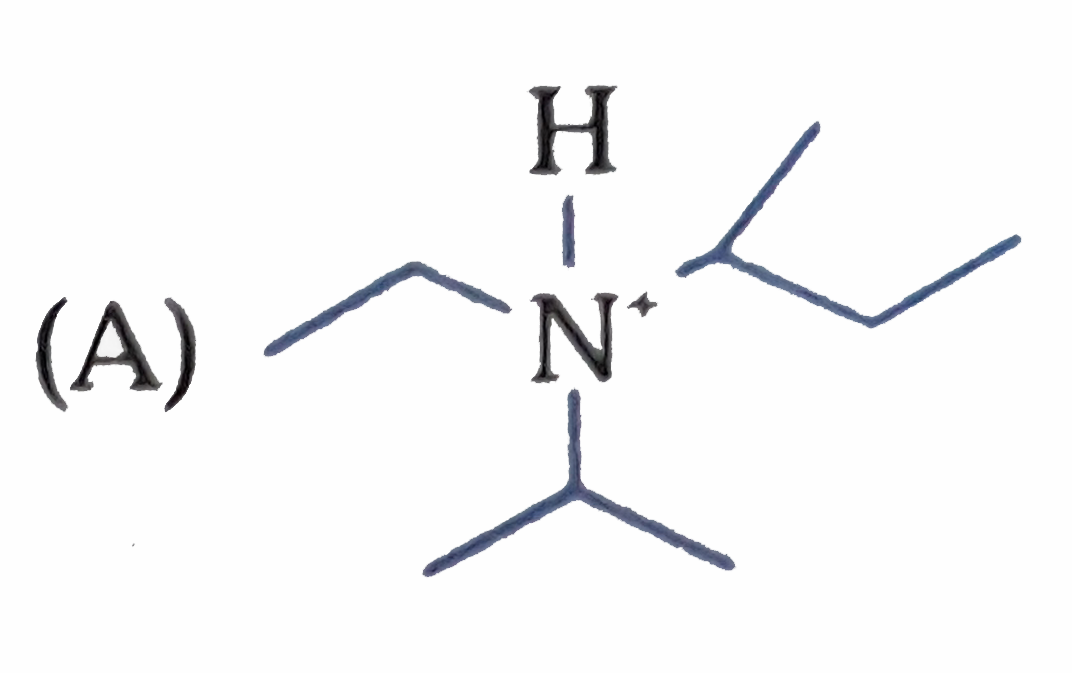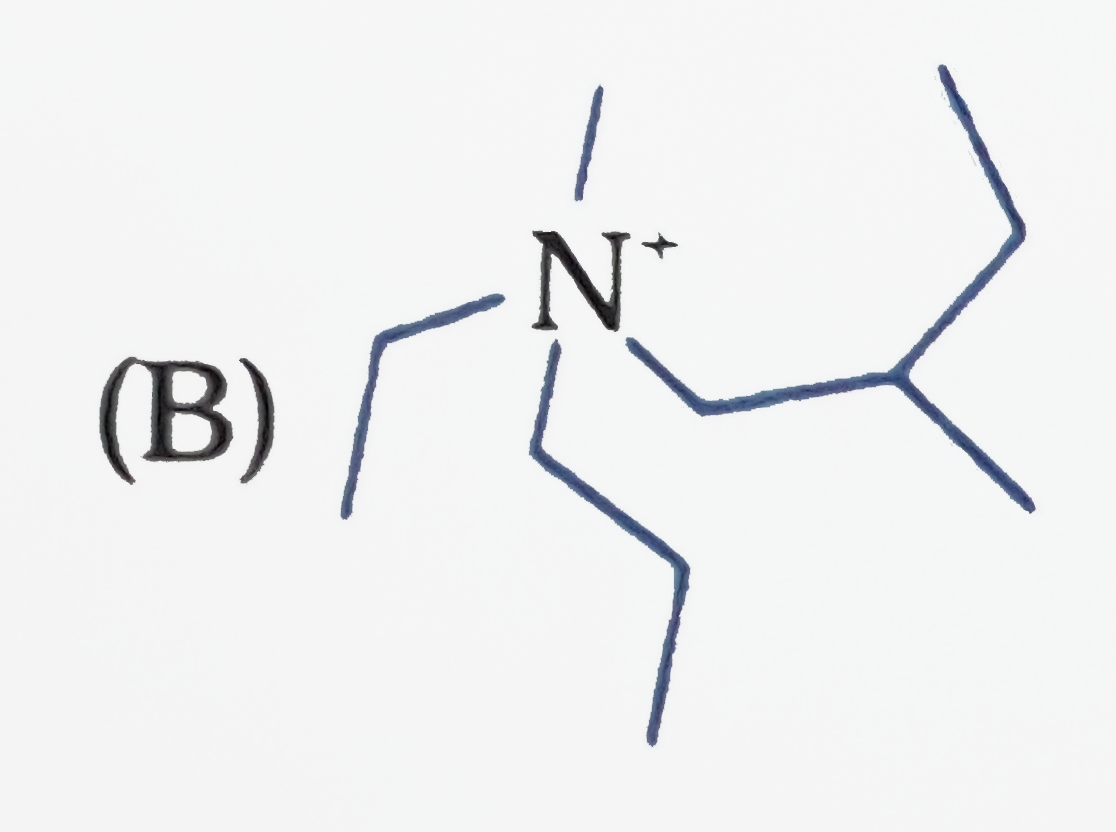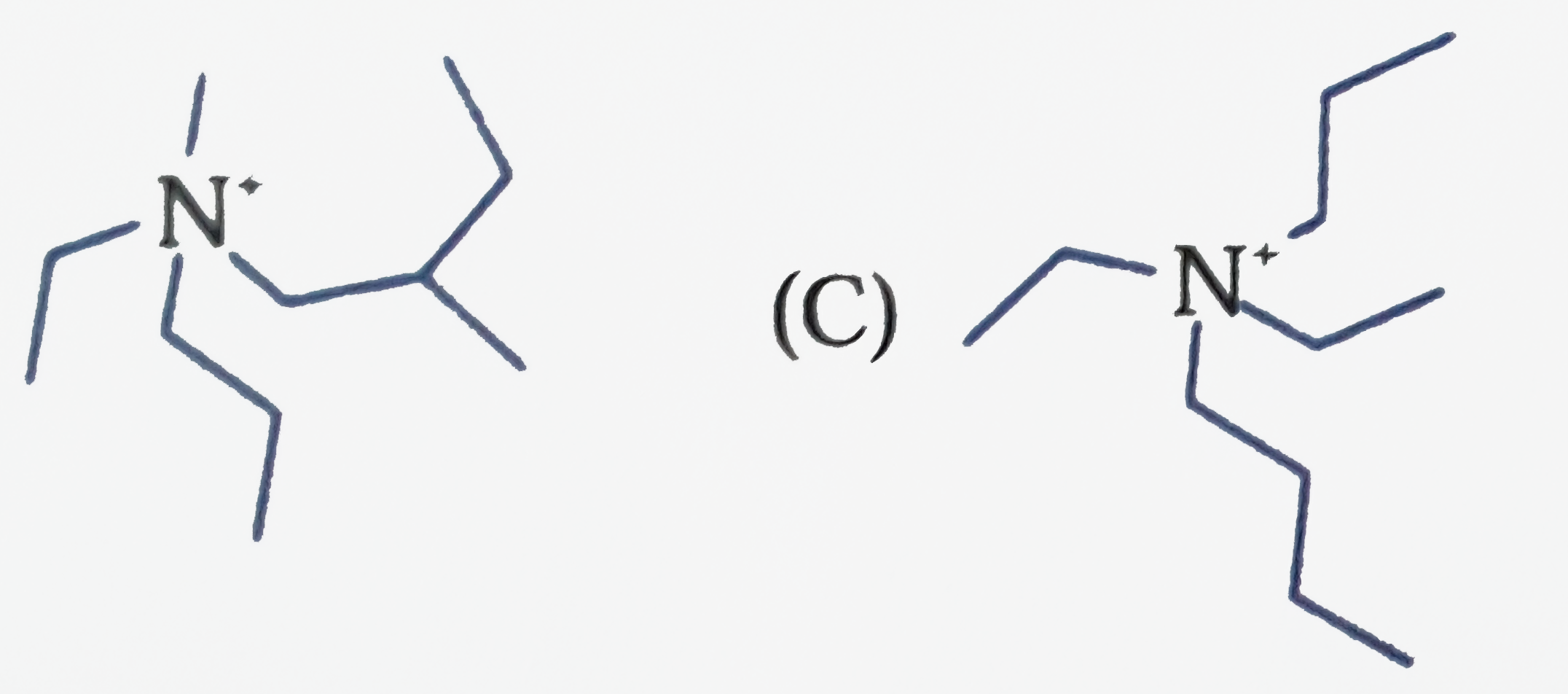Dehydration require an acid catalyst to protonate the hydroxy group of the alcohol and convert and convert it into good leaving group. Loss of water followed by a loss of a proton, given the alkene an equilibrium is established between reactants and products.

Q. 
total number of α-hydrogen in A+B is
13
15
17
19
The correct Answer is:D
Topper's Solved these Questions
- ALCOHOL, ETHERS & PHENOL, OXIDATION & REDUCTION BOOK - BANSALCHAPTER - ALCOHOL, ETHERS & PHENOL, OXIDATION & REDUCTION EXERCISE - Exercise 3
28 Videos
- ALCOHOL, ETHERS & PHENOL, OXIDATION & REDUCTION BOOK - BANSALCHAPTER - ALCOHOL, ETHERS & PHENOL, OXIDATION & REDUCTION EXERCISE - Exercise 1
86 Videos
- CARBOXYLIC ACID DERIVATIVESBOOK - BANSALCHAPTER - CARBOXYLIC ACID DERIVATIVESEXERCISE - Exercise 3
23 Videos
Similar Questions
Read the following paragraph and answer the questions given below ,
Stable equilibrium is of various types . Mechanical equilibrium is achieved when all particles are at rest and total potential energy of the system is minimum . At any stage where particles are at rest but the system is not at stable equilibrium as it can reduce its potential energy by reverting to another position, is called metastable equilibrium . Thermal equilibrium is result from the absence of temperature gradients in the system. Chemical equilibrium is obtained when no further reaction occurs between reacting substances, i.e forward and reverse rates of reaction are equal. When steam with solid iron at high temperature Fe3O4(s) and hydrogen gas are produced . But the reaction never goes to completion. This is because as the products are formed the reaction proceeds in reverse direction and when rate of reverse reaction is equal to rate of forward reaction , the concentration of reactants and products become constant and equilibrium is reached.
When two reactants (A) and (B) are mixed to give products (C) and (D) the concentration quotient (Q) at initial stage of the reaction
View SolutionAmines are less reactive in substitution reactions. Their reactivity is much lesser than alcohols and alkylflourides towards substitution. Protonation of the amino group makes it a better leaving group, but not nearly as good a leaving group as a protonated alcohol. Protonated amino groups cannot be displaced by OH− because it would react immediately with the acidic hydrogen which would convert it in to a poor nucleophile. The leaving group in quarternary ammonium ion has about the same leaving tendency as a protonated amino group but does not have acidic hydrogen. the reaction of a quarternary ammonium ion with hydroxide ion is known as Hoffmann elimination reaction. The leaving group is tertiary amine. Since a tertiary amine is only a moderately good leaving group, the reaction requires heat. The carbon to hwich the tertiary amine is attached is designated as α carbon. When the hydroxide ion starts to remove a β H form from a quarternary ammonium ion, the leaving group does not immediately start to leave because a tertiary amine is not a good leaving group. As a result, a partial negative charge bulds up on the carbon from which the proton is removed.
The compound 'C' in question number 31 on heating with moist silver oxide gives
View Solution
Knowledge Check
Dehydration require an acid catalyst to protonate the hydroxy group of the alcohol and convert and convert it into good leaving group. Loss of water followed by a loss of a proton, given the alkene an equilibrium is established between reactants and products.

Q. To improve the yield of above reaction which of following is correct.AHigh temperatureBDistillation (removal of alkene)CAddition of H2ODBoth A and BDehydration require an acid catalyst to protonate the hydroxy group of the alcohol and convert and convert it into good leaving group. Loss of water followed by a loss of a proton, given the alkene an equilibrium is established between reactants and products.

Q. Which alcohol is most reactive towards dehydration of alcohol in acid catalysed reaction.A B
B C
C D
D
Amines are less reactive in substitution reactions. Their reactivity is much lesser than alcohols and alkylflourides towards substitution. Protonation of the amino group makes it a better leaving group, but not nearly as good a leaving group as a protonated alcohol. Protonated amino groups cannot be displaced by OH− because it would react immediately with the acidic hydrogen which would convert it in to a poor nucleophile. The leaving group in quarternary ammonium ion has about the same leaving tendency as a protonated amino group but does not have acidic hydrogen. the reaction of a quarternary ammonium ion with hydroxide ion is known as Hoffmann elimination reaction. The leaving group is tertiary amine. Since a tertiary amine is only a moderately good leaving group, the reaction requires heat. The carbon to hwich the tertiary amine is attached is designated as α carbon. When the hydroxide ion starts to remove a β H form from a quarternary ammonium ion, the leaving group does not immediately start to leave because a tertiary amine is not a good leaving group. As a result, a partial negative charge bulds up on the carbon from which the proton is removed.
Which of the following compounds when subjected to Hoffmann elimination gives an alkene which can exhibit geometrical isomerism?A B
B C
C DNone
DNone
Amines are less reactive in substitution reactions. Their reactivity is much lesser than alcohols and alkylflourides towards substitution. Protonation of the amino group makes it a better leaving group, but not nearly as good a leaving group as a protonated alcohol. Protonated amino groups cannot be displaced by OH− because it would react immediately with the acidic hydrogen which would convert it in to a poor nucleophile. The leaving group in quarternary ammonium ion has about the same leaving tendency as a protonated amino group but does not have acidic hydrogen. the reaction of a quarternary ammonium ion with hydroxide ion is known as Hoffmann elimination reaction. The leaving group is tertiary amine. Since a tertiary amine is only a moderately good leaving group, the reaction requires heat. The carbon to hwich the tertiary amine is attached is designated as α carbon. When the hydroxide ion starts to remove a β H form from a quarternary ammonium ion, the leaving group does not immediately start to leave because a tertiary amine is not a good leaving group. As a result, a partial negative charge bulds up on the carbon from which the proton is removed.
Which compounds of question number 31 are optically active
View SolutionAmines are less reactive in substitution reactions. Their reactivity is much lesser than alcohols and alkylflourides towards substitution. Protonation of the amino group makes it a better leaving group, but not nearly as good a leaving group as a protonated alcohol. Protonated amino groups cannot be displaced by OH− because it would react immediately with the acidic hydrogen which would convert it in to a poor nucleophile. The leaving group in quarternary ammonium ion has about the same leaving tendency as a protonated amino group but does not have acidic hydrogen. the reaction of a quarternary ammonium ion with hydroxide ion is known as Hoffmann elimination reaction. The leaving group is tertiary amine. Since a tertiary amine is only a moderately good leaving group, the reaction requires heat. The carbon to hwich the tertiary amine is attached is designated as α carbon. When the hydroxide ion starts to remove a β H form from a quarternary ammonium ion, the leaving group does not immediately start to leave because a tertiary amine is not a good leaving group. As a result, a partial negative charge bulds up on the carbon from which the proton is removed.
Which of the following statements are true regarding Hoffmann elimination?
View SolutionAmines are less reactive in substitution reactions. Their reactivity is much lesser than alcohols and alkylflourides towards substitution. Protonation of the amino group makes it a better leaving group, but not nearly as good a leaving group as a protonated alcohol. Protonated amino groups cannot be displaced by OH− because it would react immediately with the acidic hydrogen which would convert it in to a poor nucleophile. The leaving group in quarternary ammonium ion has about the same leaving tendency as a protonated amino group but does not have acidic hydrogen. the reaction of a quarternary ammonium ion with hydroxide ion is known as Hoffmann elimination reaction. The leaving group is tertiary amine. Since a tertiary amine is only a moderately good leaving group, the reaction requires heat. The carbon to hwich the tertiary amine is attached is designated as α carbon. When the hydroxide ion starts to remove a β H form from a quarternary ammonium ion, the leaving group does not immediately start to leave because a tertiary amine is not a good leaving group. As a result, a partial negative charge bulds up on the carbon from which the proton is removed.
Which of the following statements is correct?
View SolutionRead the following paragraph and answer the questions given below ,
Stable equilibrium is of various type . Mechanical equilibrium is achieved when all particles are at rest and total potential energy of the system is minimum . At any stage where particles are at rest but the system is not at stabel equilibrium as it can reduce its potential energy by reverting to another position, is called metastable equilibrium . Thermal equilibrium is result from the absence of temperature gradients in the system. chemical equilibrium is obtained when no further reaction occurs between reacting substances, i.e forward and reverse rates of reaction are equal. when steam with solid iron at high temperature Fe3O4(s) and hydrogen gas are produced . But the reaction never goes to completion. this is because as the products are formed the reaction proceeds in reverse direction and when rate of reverse reaction is equal to rate of forward reaction , the concentration of reactants and products become constant and equilibrium is reached.
When two reactants (A) and (B) are mixed to give products (C) and (D) the concentration quotient (Q) at initial stage of the reaction
View SolutionRing-opening reactions of epoxides can proceed by either SN2 or SN1 mechanisms, depending on the nature of the epoxide and on the reaction conditions. If the epoxide is asymmetric, the structure of the product will very according to which mechanisms dominates. When an symmetric epoxide undergoes solvolysis in basic methanol, ring-opening occurs by and SN2 mechanisms, and the less subsitution carbon is the site of nucleophilic attack. Conversely, when solvolysis occurs in acidic methanol, the reaction occurs by a mechanisms with substantial SN1 character, and the more substituted carbon is the site of attack. These are both good examples of regioselective reactions, examine the basic, SN2 case first. The leaving group is an alkoxide anion, because there i s not acid avaialble to protonate the oxygen prior to ring opening. An alkoxide is a poor leaving group, and thus the ring is unlikely to open without a'push' from the nucleophile. Like in other SN2 reactions, nucleophilic attack takes place from the backside, resulting in inversion t the electrophilic carbon. The best way to depict the acid-catalyzed epoxide ring-opening reaction is as a hybrid, or cross, between an SN2 and SN1 mechanism. First, the oxygen is protonated, creating a good leaving group. Then the carbon-oxygen bond begins to break and positive charge begins to build up on the more substituted carbon. answer the following based on the above :

The product formed after nucleophilic attack and mild hydrolysis is
View Solution

